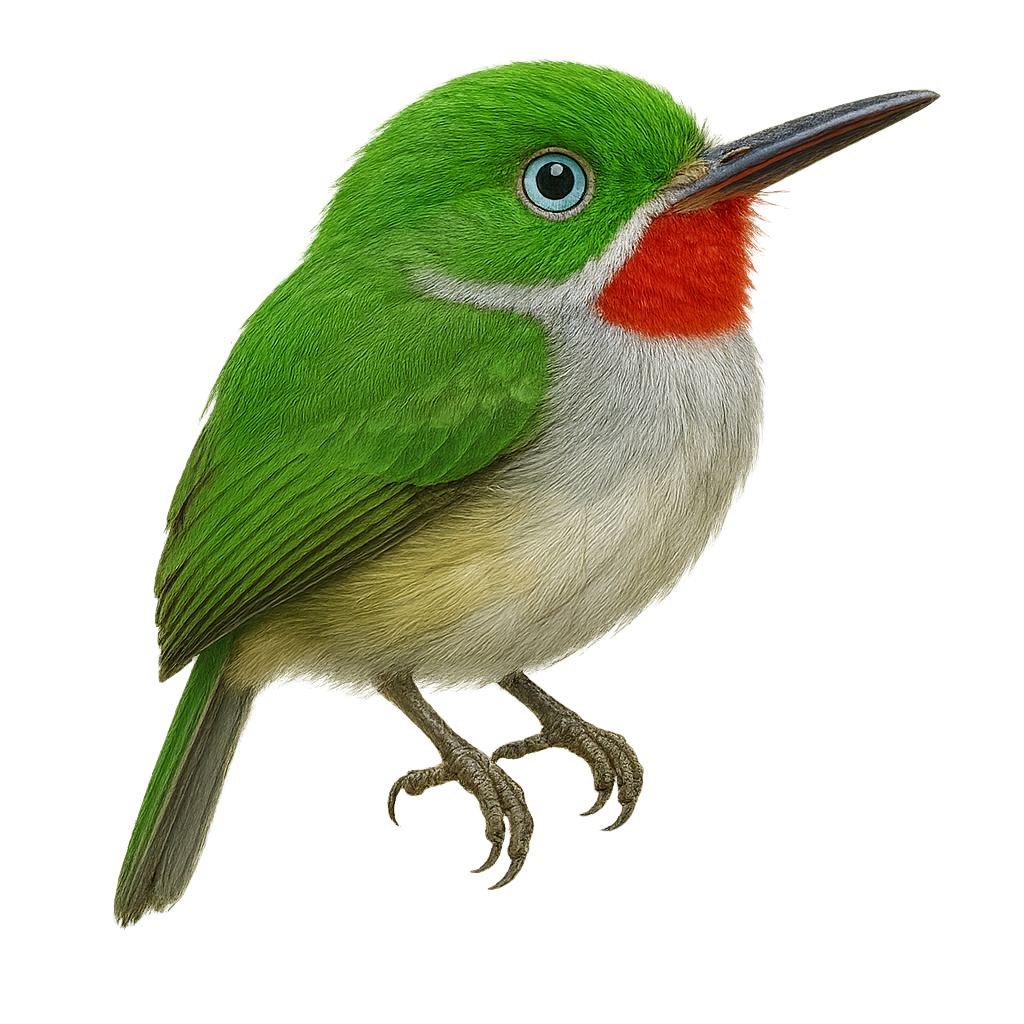Your wildlife photography guide.
Explore the narrow-billed tody in detail, study its behavior, prepare your shots.
Where to observe and photograph the narrow-billed tody in the wild
Learn where and when to spot the narrow-billed tody in the wild, how to identify the species based on distinctive features, and what natural environments it inhabits. The WildlifePhotographer app offers tailored photography tips that reflect the narrow-billed tody’s behavior, helping you capture better wildlife images. Explore the full species profile for key information including description, habitat, active periods, and approach techniques.
Narrow-billed Tody
Scientific name: Todus angustirostris

IUCN Status: Least Concern
Family: TODIDAE
Group: Birds
Sensitivity to human approach: Suspicious
Minimum approach distance: 5 m
Courtship display: March to May
Incubation: 20-21 jours
Hatchings: April to June
Habitat:
Humid forests, wooded areas, mangroves
Activity period :
Primarily active during the day, with peak activity in the morning and late afternoon.
Identification and description:
The Narrow-billed Tody, or Todus angustirostris, is a small, colorful bird endemic to the island of Hispaniola, shared by Haiti and the Dominican Republic. It is distinguished by its bright green plumage, vivid red throat, and pale yellow belly. Measuring about 11 cm in length, it has a thin, slightly curved beak, adapted to its diet mainly consisting of insects. This tody is often seen in humid forests and wooded areas, where it moves nimbly in search of food. Although it is relatively tolerant, it remains discreet and blends easily into its environment thanks to its plumage.
Recommended lens:
400mm – adjust based on distance, desired framing (portrait or habitat), and approach conditions.
Photography tips:
To photograph the Narrow-billed Tody, focus on humid forests where it is most active. Use a 400mm lens or longer to capture precise details of its colorful plumage. Be patient and discreet, as it remains suspicious despite being not very shy. Early morning hours are best for soft, natural lighting. A tripod can be helpful to stabilize your camera and avoid motion blur.
The WildlifePhotographer App is coming soon!
Be the first to explore the best nature spots, track rutting seasons, log your observations, and observe more wildlife.
Already 1 439 wildlife lovers subscribed worldwide

